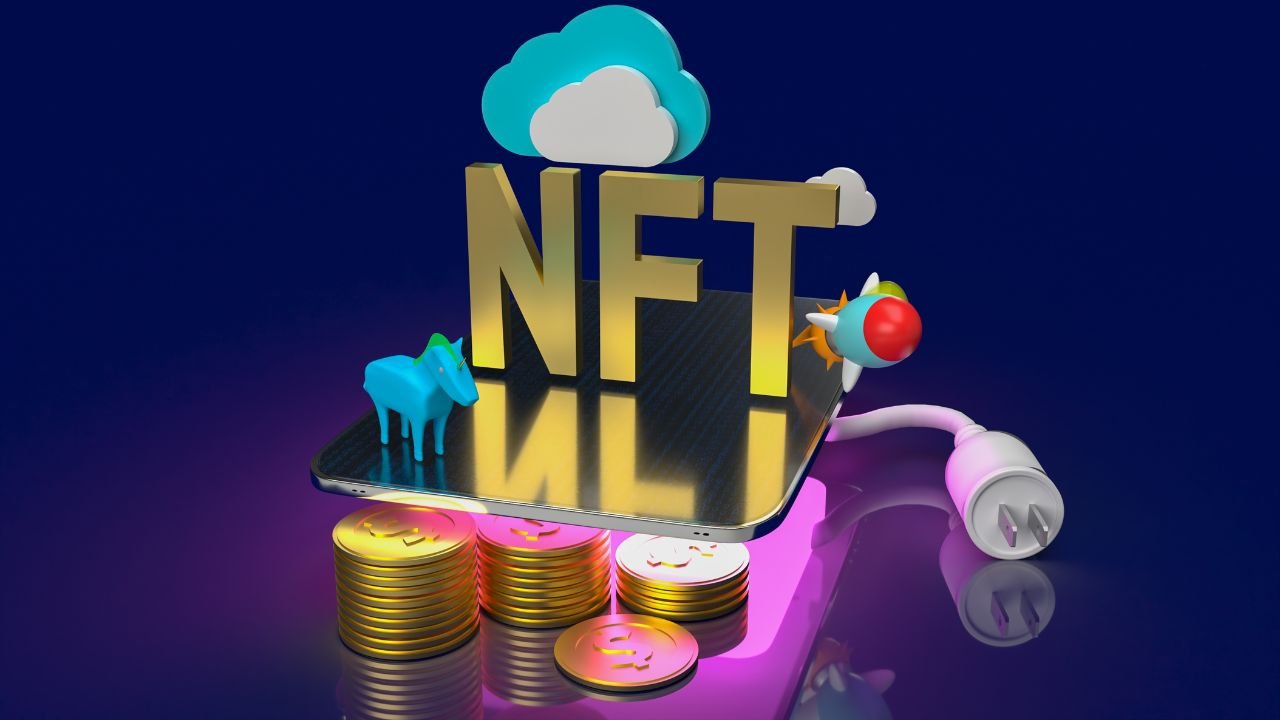Non-fungible tokens (NFTs) have emerged as a revolutionary form of digital asset within the cryptocurrency space. Each Non-fungible token sports a unique digital identifier that certifies its ownership and authenticity, recorded on a blockchain, an innovation that has disrupted the conventional perception of art and collectibles in the digital realm. Unlike cryptocurrencies such as Bitcoin or Ethereum that are interchangeable and thus ‘fungible,’ Non-fungible tokens are one-of-a-kind assets. This distinctive quality means that they cannot be exchanged on a like-for-like basis, providing a digital scarcity that has become highly sought after, particularly in the fields of digital art and collectibles.
The proliferation of NFTs is largely attributed to the wider adoption of blockchain technology and the growing interest in digital ownership. Blockchain technology ensures the legitimacy of NFT transactions while enabling a secure method of transferring ownership. The transparent nature of this technology also allows for the tracking of provenance, a feature that’s extremely valuable in the world of art and collectibles. As a result, NFTs have attracted the attention of artists, gamers, collectors, and investors alike. The largest NFT marketplaces facilitate the creation, purchase, sale, and auctioning of these digital assets, opening a new avenue for digital creators to monetize their work and for collectors to potentially invest in a new class of assets.
Table of Contents
Understanding NFTs
Non-fungible tokens stand out in the digital landscape for their uniqueness and are not interchangeable. They are non-fungible, meaning each token has distinct characteristics that prevent it from being equivalent to another. Non-fungible token represent ownership of a particular item or piece of content, such as digital art, music, videos, and more.
The backbone of NFTs is blockchain technology, which ensures the authenticity and provenance of these digital assets. When one purchases an NFT, they are buying a kind of digital certificate of ownership stored on the blockchain. This technology also enables the secure transfer of assets, ensuring that each NFT is one-of-a-kind and cannot be replicated or substituted.
Here are key points about Non-fungible tokens to grasp:
- Fungibility: Traditional cryptocurrencies, like Bitcoin, are fungible, where each coin is the same as the next. On the contrary, NFTs are unique and have individual value.
- Blockchain: A decentralized and secure digital ledger that records NFT transactions.
- Digital Asset: An asset in a digital format. NFTs transform digital works into one-of-a-kind, verifiable assets that are easy to trade on blockchain networks.
The growing market of Non-fungible tokens has given way to a new form of asserting rights over digital content, thereby influencing the concept of ownership in the digital realm. They have important implications across various sectors, from art and entertainment to real estate and identity verification.
The Blockchain Foundation
The bedrock of NFTs lies within blockchain technology, where Ethereum has become a frontrunner due to its smart contract capabilities. Token standards like ERC-721 and ERC-1155 provide flexible means to represent ownership over digital and sometimes physical assets.
Ethereum and Smart Contracts
Ethereum operates not just as a cryptocurrency but as a comprehensive platform for decentralized applications (dApps). It is driven by smart contracts, which are self-executing contracts with the terms of the agreement written directly into code. These contracts run on the blockchain, ensuring that transactions are carried out as programmed without the need for intermediaries.
- Smart Contracts: Automatically execute, control, or document legally relevant events according to the terms of a contract or an agreement.
- Benefits: Transparency, security, and efficiency in digital transactions.
- Blockchain: A distributed ledger that records every transaction across a network in a decentralized manner.
Token Standards: ERC-721 and ERC-1155
The innovation of token standards like ERC-721 and ERC-1155 has been pivotal in the rise of Non-fungible tokens. ERC-721 was the first standard for representing non-fungible digital assets on the Ethereum blockchain, allowing for each token to be unique and ownership to be tracked precisely.
- ERC-721: Introduced as a standard for non-fungible tokens, meaning each token is distinct with individual characteristics.
ERC-1155 builds on the concept of ERC-721, enabling a single smart contract to represent multiple tokens at once. This allows for greater efficiency and lower transaction costs when managing and transferring diverse types of digital assets.
- ERC-1155: Allows for the creation of both fungible (interchangeable) and non-fungible tokens within a single contract, offering vast versatility in tokenization.
Art and Digital Collectibles

In the realm of Non-fungible tokens, art and digital collectibles are redefining ownership and value in the digital space. They represent a vast market where music, games, videos, and digital art coalesce, generating significant sales and spotlighting the works of prominent digital artists.
Music, Games, and Videos
The intersection of Non-fungible tokens with music, games, and videos has opened up new avenues for artists and creators to monetize and protect their work. Musicians are now selling exclusive songs and albums as NFTs, providing fans with a tangible stake in their favorite tracks. The gaming industry leverages Non-fungible tokens for in-game assets, allowing players to own unique digital items that can be traded or sold. Similarly, videos are being tokenized, turning original content into collectible assets.
Art Market Value and Sales
The value of Non-fungible tokens in the art market has seen a meteoric rise, with sales reaching astounding figures. Digital artworks are being auctioned at premium prices, with pieces like those from Beeple shattering records. The unique attribute of NFTs lies in their ability to verify the authenticity and scarcity of digital art, thus contributing to their high market value.
Prominent Digital Artists
Prominent digital artists such as Beeple have risen to fame in the Non-fungible token space, with their work achieving unprecedented sales. Their art is not just about visuals but also encapsulates the essence and context of the modern digital experience, commanding attention and value that rivals traditional art. Digital artists benefit directly from NFTs through initial sales and resale royalties, marking a significant shift in how artists are rewarded for their creativity.
NFT Marketplaces
NFT Marketplaces are essential platforms where users can list, trade, and discover NFTs. These marketplaces facilitate transactions and provide a space for digital creators and collectors.
OpenSea and Rarible
OpenSea is often recognized as the largest NFT marketplace. It offers a wide variety of digital items and assets, making it a go-to platform for NFT transactions. Their diverse marketplace includes art, gaming items, and music, appealing to a broad demographic of users. Close in its variety and community is Rarible, a decentralized NFT marketplace that empowers artists and creators with easy-to-use tools for the creation, sale, and purchase of ownership rights to digital works.
- OpenSea:
- Market Size: The largest to date
- Assets: Includes art, gaming items, memberships, PFPs, and more
- Rarible:
- Features: Community governance, creator-centric tools
- Blockchains Supported: Multiple, including Ethereum and Flow
Listing and Trading NFTs
The process of listing NFTs on marketplaces like OpenSea and Rarible typically involves minting a digital item and then setting a price for it, either via auction or a fixed amount. Trading, on the other hand, occurs when buyers or collectors purchase these listed NFTs, often using cryptocurrency.
- Listing Process:
- Mint digital item
- Set sale method (auction or fixed price)
- Trading Mechanism:
- Sales completed using cryptocurrency
- Transparent transaction history available for each NFT
Ownership and Authenticity
In the realm of non-fungible tokens (NFTs), the twin pillars of ownership and authenticity are fundamentally critical. They provide the necessary foundation for the value and trust in digital assets and their transactions.
Proof of Ownership and Copyright
Non-fungible tokens are intrinsically tied to ownership. When one purchases an NFT, they are essentially acquiring a digital certificate stored on a blockchain, indicating that they hold the rights to the unique asset it represents. The smart contract associated with the NFT stipulates the terms of ownership, potentially including copyright details such as reproduction rights. Understanding ownership via blockchain technology is central in confirming that one has legal claim over the digital property in question.
Verification and Authenticity
The verification process of an Non-fungible token is paramount; it ensures that the digital asset is original and not a counterfeit. Each NFT has a distinct identifier recorded on the blockchain, allowing for thorough authenticity checks. The blockchain’s immutable ledger establishes an incontrovertible trail, proving the provenance and history of the NFT. This aspect underpins the property rights of digital assets and reinforces confidence in their legitimacy and value. Forbes examines authenticity in NFTs and its role in maintaining the integrity of the market.
Cultural Impact and Trends
The emergence of Non-Fungible Tokens has significantly altered the landscape of cultural expression and ownership. As NFTs continue to gain widespread attention, their influence can be seen shifting traditional norms and creating new trends.
From Celebrities to Memes
NFTs have captured the attention of public figures and celebrities, unlocking novel ways for them to connect with their audience. Snoop Dogg has become a notable figure in the NFT space, engaging with digital assets as both a creator and a collector. His venture into this domain has not only boosted his brand but also influenced his followers to explore the concept of NFTs.
- Memes, which once were simply shared for entertainment, have now found a new form of value and ownership through Non-fungible tokens. The original ‘Nyan Cat‘ animation, for instance, was sold as an NFT, transforming a piece of internet culture into a collectible asset.
Impact on Arts and Culture
Arts and culture have been particularly affected by the rise of NFTs. Digital artists have found a powerful platform to sell their work as verifiable, unique pieces through blockchain technology. This shift has brought forth a new era for art collectors and creators alike, evident in the high-profile sale of digital artist Beeple’s work.
Cryptopunks and Bored Ape Yacht Club have emerged as pioneering collectible series within the NFT market, influencing the perception of digital ownership and identity in cultural spaces.
Collectible Series Description Cryptopunks One of the first NFT projects, featuring 10,000 unique pixel-art characters. Bored Ape Yacht Club A collection of 10,000 unique digital apes that offer membership to an exclusive club.
These trends are not mere flashes in the pan but are shaping a future where culture intersects with technology, redefining how value is created and exchanged in the digital era.
Economic Aspects

The economic realm of non-fungible tokens presents a paradigm shift in digital ownership and investment strategies, generating both opportunities and potential risks. This section will examine the intricacies of investing in Non-fungible tokens and the peculiarities of royalties and resale in the market, along with a critical look at the bubble concerns that accompany this nascent economic phenomenon.
Investing in NFTs
When it comes to investing in Non-fungible tokens, individuals are effectively purchasing a unique digital asset that often correlates with a piece of art, music, or other creative works. The value of these tokens is highly subjective and influenced by factors like rarity, artist reputation, and cultural significance. According to Forbes, this innovation has allowed creatives to share and receive payment globally, reshaping economic opportunities within the digital space. However, money laundering and opaque valuations have raised red flags, necessitating a cautious approach.
Risks and Bubble Concerns
The excitement around NFTs also brings risks and bubble concerns. Critics argue that the market displays characteristics of a bubble, with prices driven more by speculation than inherent value. The potential for a sudden market correction leads to caution among economists and investors alike. This speculation is amplified by stories of significant returns and high-profile sales that may not be sustainable long term, as indicated by TechCrunch’s analysis of finance capital’s larger economic developments.
Royalties and Resale
A notable economic aspect of Non-fungible tokens lies in the domain of royalties and resale. Creators can receive royalties each time the NFT changes hands on the secondary market, promising an ongoing revenue stream that was previously difficult to secure in the digital art world. This shifts the economic balance towards the creators and away from traditional dealers and galleries, as highlighted by the practical guide on the economics of NFTs by Daisie. However, setting appropriate royalty rates remains a complex issue, blending economic strategy with artistic valuation.
Environmental and Legal Considerations

In exploring the complex world of Non-Fungible Tokens, one encounters significant environmental and legal considerations. These areas are critical to understand for anyone engaging with NFTs.
Environmental Impact of NFTs
The environmental impact of Non-fungible tokens is tied to the energy-intensive nature of blockchain technology. Cryptocurrencies, like Bitcoin and Ethereum, rely on a Proof of Work system that requires significant computational power and, consequently, electricity. Non-fungible tokens, primarily hosted on such blockchains, inherit this environmental footprint. Data suggests that the carbon emissions from the electricity used by blockchain networks can be substantial. For example, a single Ethereum transaction’s carbon footprint is equivalent to over 140,000 VISA card transactions.
Legal Aspects of Ownership
When considering the legal dimensions of NFTs, the focus shifts to property rights and the application of smart contract technology. A smart contract is a contract in which the terms are written directly into code, allowing it to self-execute. Navigating the legal landscape means addressing how these digital assets interact with existing laws. Ownership through NFTs involves unique challenges such as establishing intellectual property rights and ensuring that buyers understand the rights they are acquiring. Moreover, questions remain about the regulatory framework applicable to Non-fungible tokens, which can involve securities law if the tokens bear resemblance to traditional investment instruments.
Key Takeaways
- NFTs offer a unique form of digital ownership recorded on the blockchain.
- They have significantly impacted the art and collectibles sectors.
- Environmentally and legally, NFTs pose new considerations and challenges.
Frequently Asked Questions (FAQs)
The Frequently Asked Questions section aims to provide clarity on the aspects of Non-Fungible Tokens, including their creation, platforms for selling, and the factors influencing their value.
What are the best platforms for selling NFTs?
The most prominent platforms for selling NFTs include OpenSea, Rarible, and Foundation, which offer user-friendly interfaces and a wide audience reach. Users should consider factors such as fees, blockchain support, and community engagement when choosing a platform.
What is the process for creating an NFT?
Creating an Non-fungible token involves uploading a digital file to an NFT marketplace, minting it as a digital asset, and listing it for sale. This process is typically guided by the marketplace’s tools and instructions, which make it accessible for creators.
Which blockchain technologies are most commonly used for NFTs?
Ethereum is the leading blockchain technology for Non-fungible token due to its robust smart contract capabilities. Other blockchains like Binance Smart Chain and Flow also support NFTs and offer different benefits such as lower gas fees or unique features.
What considerations should be taken into account when evaluating NFT marketplaces?
When evaluating NFT marketplaces, one should consider the security measures, user interface, transaction fees, and the types of NFTs primarily sold on the platform. Additionally, the reputation and volume of transactions on the marketplace are crucial metrics.
What are the potential negatives associated with NFTs?
The negatives associated with NFTs can include environmental concerns due to the high energy consumption of certain blockchains, potential for market volatility, and issues with copyright and ownership verification.
What makes an NFT valuable?
The value of an NFT is often determined by its uniqueness, the fame of the creator, the artwork’s historical significance, and its utility in digital environments. Scarcity and collector demand also play vital roles in establishing an NFT’s value.
Enjoyed this informative article? Explore additional engaging and enlightening content here.



